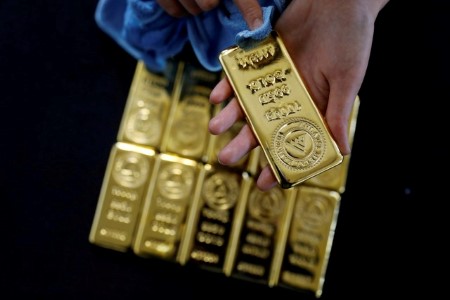




Monthly Economic Update: One for the road
 DOWNLOAD
DOWNLOAD

Inflation Update: Still low, still slow
 DOWNLOAD
DOWNLOAD

Philippines Trade Update: Exports momentum continues
 DOWNLOAD
DOWNLOAD


Gold scales near two-week peak as Treasury yields retreat

Aug 23 – Gold prices jumped 1% to a near two-week high on Wednesday, helped by a pullback in US bond yields and the dollar as investors looked ahead to the Jackson Hole symposium for guidance on interest rates.
Spot gold rose 1% to USD 1,916.20 per ounce by 2:17 p.m. EDT (1817 GMT), after hitting its highest since Aug. 11. It was also poised to register its biggest daily percentage rise in over a month.
US gold futures settled 1.1% higher at USD 1,948.10.
“It (gold) was a little oversold ahead of itself and we’re getting a bounce on some bargain hunting and then short covering,” said Bob Haberkorn, senior market strategist at RJO Futures, adding that a slight dip in yields is also helping.
Benchmark 10-year Treasury yields slipped from near 16-year highs hit in the previous session, while the dollar fell after weak US PMI data, making gold more attractive for other currency holders.
The S&P Global’s flash US composite PMI index showed US business activity approached the stagnation point in August, with growth at its weakest since February as demand for new business in the vast service sector contracted.
Market participants’ focus will be on a speech by Federal Reserve Chair Jerome Powell at Jackson Hole on Friday for additional clues about the path for interest rates.
According to the CME’s FedWatch Tool FEDWATCH, the probability that the Fed leaves rates unchanged at its September meeting is now at 88.5%.
Gold is highly sensitive to rising US interest rates, as they increase the opportunity cost of holding non-yielding bullion.
“People are expecting a continued hawkish tone from Chair Powell. It is too early for him to point to a loosening in policy on the horizon,” said Daniel Ghali, commodity strategist at TD Securities.
“The market’s attention is now shifting from how high will rates go to how long will rates remain high.”
Spot silver gained 4.1% to USD 24.34 an ounce and platinum added 1.4% to USD 931.65. Palladium was up 0.9% at USD 1,273.53.
(Reporting by Harshit Verma and Brijesh Patel in Bengaluru; editing by David Evans, Ed Osmond, and Krishna Chandra Eluri)
This article originally appeared on reuters.com





 By Reuters
By Reuters